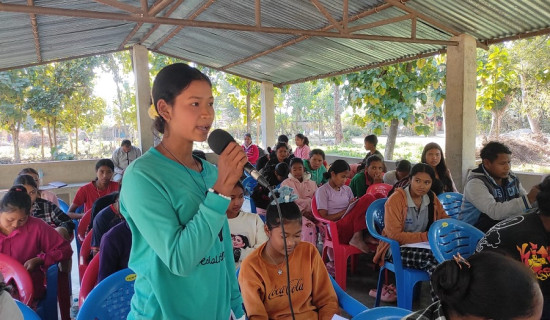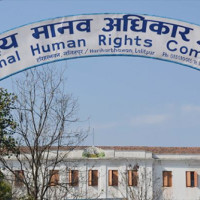- Wednesday, 25 December 2024
National Archives restoring reels
By A Staff Reporter,Kathmandu, Sept. 13: The National Archives (NA) is working to restore the reels of the historical texts and documents that are damaged because of vinegar syndrome.
The NA has moved ahead to develop copies of the infected microfilm reels after they started decaying due to acidity.
Despite the NA’s efforts, 500 reels have already been destroyed.
“Now, we are making copies of the infected preserved reels on the basis of smell test of acidity,” said Jyoti Neupane, Photographic Officer at the NA.
The acidity that caused 'vinegar syndrome' is generated in the reels containing acid. The information printed on the reels gets erased and the reels themselves dissolve due to the acid.
The acid-infected reels are categorised into four stages as per the infected ratio.
Despite the NA’s efforts, 500 reels have already been destroyed.
A very sour smell starts emanating from a reel that has started disintegrating.
The eyes get irritated and one feels suffocated while entering the room where the microfilms are stored, he said. This problem is called 'vinegar syndrome' because the smell of the disintegrated microfilms matches with vinegar.
According to him, four stages of the infection have been identified so far. In the first stage, the reel starts to smell sour like vinegar. After that, the intensity of the smell gradually increases and the reel becomes brittle and wrinkled.
In the third stage, the reel becomes slick and it starts to stick and the smell becomes unbearable. It produces residue, making it impossible to roll out the reel; the negatives of the pictures taken melt and come off and the reel is completely destroyed.
In the fourth stage, acid-infected reels could not recover again because they become sticky and cannot be opened, he said.
Contents of the reels in the third stage can be copied in other reels and microfilms partially and contents of the reels in the second stage can be copied fully, he said.
It took around three months to reach third stage from second stage acidity and the second- stage infected reels reach the four stage within five to six months, he added.
"We have given priority to making copies of second-stage infected reels from reels to reels and reels to microfilms because it can be copied fully.”
The age of acid-containing reels is around 500 years. For long-term preservation, safety of data from hacking and software crash, reels system is good for the documentation of historical documents. “Microfilms can be used for day-to-day update but it not safe method for documentation," he said.
Initially, the documents and manuscripts were kept on acid-containing reels, but since 1995, they have been kept on polyester-containing reels.
To solve this problem, polyester web microfilm was developed in the 1990s. The archives have started using polyester since 1995. However, several reels in the archives have already been infected with vinegar syndrome.
NA has around 7,000 of these acid-based reels. During the working process, 4,300 reels have been infected with acid and the infected reels are being copied in new reels, he said.
"We are making copies of reels hiring competent manpower after government allocated 30 per cent more budget than last year.”
The government has allocated more budget in the current fiscal year after 'Microfilm Reel Preservation Action Plan' was submitted to the Ministry of Culture, Tourism and Civil Aviation through the Archaeology Department," he informed.
If government provides regular budget every year, the process to copy infected reels would be completed within three years. "We have not sufficient competent manpower to make copies of infected reels," he added.
The problem had arisen 10 to 15 years ago because the microfilm could not be kept at the right temperature at the initial stage, he said.
Lack of temperature maintenance is not the only cause for the damage of the microfilm reels, it is a universal problem noticed even before the age of microfilms, he informed.
The best preservation method is to keep up with time – using the latest technology, he said.




-square-thumb.jpg)










